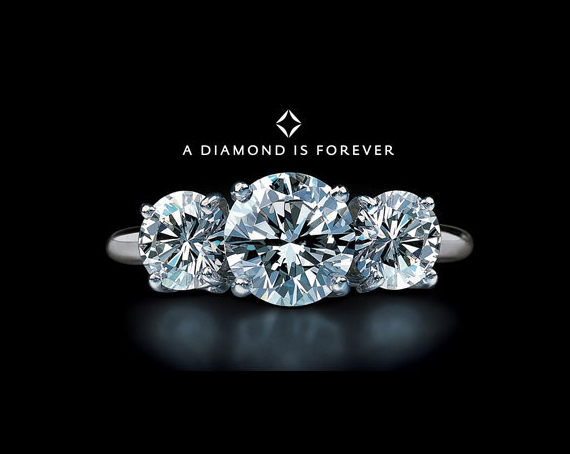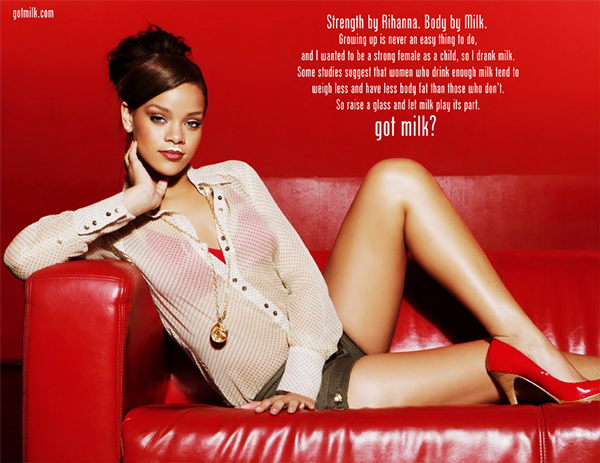Diamond advertising is undergoing big changes. Last August, De Beers announced “a major investment in a holiday marketing campaign to generate increased consumer demand for diamond jewellery during the year-end holiday season”. The campaign will be launched alongside Forevermark’s “A Diamond is Forever” campaign, which is also aimed at generic diamond promotion.
While the news was received with enthusiasm by the category, it also caused some puzzled faces. The fact that De Beers is using Forevermark for generic advertising seems a contradiction in terms, as the brand was created to increase product differentiation in the first place. All clues point at the fact that De Beers’ decision was not planned in advance, and should rather be seen as “first emergency response” to the constant decline in the relative value of diamonds.

When in the early 2000s De Beers began to move away from generic advertising, it adduced some valid justification. For a start, the company had had to bear the costs of diamond promotion for almost a century. De Beers’ directors provided this “free” service quite happily, at least for as long as De Beers had a quasi-monopoly over rough trade. But as new mining companies joined the business, their free-riding attitude and lack of substantial contribution to generic marketing became a matter of serious concern.
Adding to this, a number of scandals arose in the late 90s threatening the industry: the blood diamonds in Africa, synthetic stones sneaked into the trade pipeline, environmental concerns and lack of corporate social responsibility. De Beers was not directly touched by those scandals but, being the main actor in the business, it ended paying more than anyone else in absolute terms.
The idea behind the creation of Forevermark back in 2008 was probably to address all those issues at the same time. By producing and advertising branded diamonds, De Beers made sure that the money it was spending in advertising campaigns would have benefited its own company only. Additionally, Forevermark was created with a highly ethical image: its diamonds were certified as natural, high quality, conflict free and supportive of local communities and environment. This was aimed at distancing and elevating the brand from other competitors.

When looking at things from this perspective, De Beers policy appeared rational and proportionate. Yet, results never met the expectations, forcing the company to make a sudden U turn back to generic advertising. So what went wrong?
Several consumer researches have analyzed the role of generic advertising in the last 30 years. As a rule, generic advertising is aimed at increasing the primary demand of a category of products by convincing more people to buy them. If we imagine the diamond market as a pie to be divided among all players in the business, the role of generic advertising would be to increase the size of the pie as much as possible. As a general rule, generic marketing does not influence the share of the pie in possess of each actor. Competition inside a specific market is usually carried out through branded advertising. Generic ads are common practice among agricultural commodities, particularly in the United States, where they have proven to be an effective promotion tool over the years.
Looking specifically at diamonds, generic advertising played a crucial role in the creation and consolidation of the global market in the 20th Century. Hadn’t it been for clever marketing strategies, today diamonds would not be perceived by the general public as one of the universal symbol of eternal love.
When it took the decision of killing all generic advertising in 2008, De Beers probably made a well-reasoned calculation. The premise was that decades of persistent advertising campaigns had shaped a solid market that would have remained loyal even without generic promotion. Hence, they expected that the size of pie would have decreased little to not at all. On the other hand, the money De Beers saved could have been reinvested in the promotion of its branded products (mainly Forevermark and De Beers Diamond Jewellers), thus increasing its market share at the expenses of main competitors.
De Beers definitely got the second part right. The Forevermark brand has been experiencing growth in the double-digit range since its creation. Strong reputation allows it to sell its products at a price 15% higher than those offered on the generic market. If we follow the pie example above, by selling more diamonds and at a higher price than competition, De Beers succeeded in increasing the size of its slice, leaving less for other diamond players.
But what made the strategy go wrong in the long period was the first premise: that customer loyalty to diamond products was to be taken for granted. Overconfidence on the strength of the diamond market proved to be a big mistake because, as soon as generic advertising began to decrease, the industry went under pressure from a wide range of competitors. Today competition is not limited to products in a comparable range, such non-diamond jewellery, but encompasses several unrelated luxury sectors. High-end fashion, electronics, travelling, automotive and beauty products have all become direct rivals of diamond jewellery. As more and more alternatives became available to the public, demand elasticity for diamonds increased, thus keeping prices down.
Market analysts at De Beers gradually came to the conclusion that this situation has risen to the level of a strategic threat to the industry. Proof of that is that competition from other luxury categories was mentioned as the third most important future trend in the company’s 2014 Diamond Insight Report. The report also assessed that “investment will be required to safeguard and nurture the diamond dream”. And obviously the only way to do that is through some form of generic advertising.
While De Beers’ efforts are to be welcomed, the rest of the diamond industry should not get too comfortable. For a start, the level of funding that De Beers is putting into is nowhere near the one they used to guarantee up to 15-20 years ago. This is due to their plan not to give up on branded products, which will also keep receiving substantial fundings. It is rather clear that De Beers is not trying to make the diamond pie as big as possible, but rather trying to find an optimal combination of branded and generic advertising to maximize its revenues.
For this reason, it would be extremely dangerous to take De Beer’s commitment as an excuse to drop joint industry efforts, such as the World Diamond Mark. On the contrary, this is a unique occasion to launch a global synergetic action and boost diamond value globally.
A first step in this direction would be to recognize that generic advertising is too important for the diamond market to be left to individual initiative and voluntary fundings. Several other commodity markets which sit in a similar situation one have taken a normative approach to advertising. One very good example is the highly successful “Got Milk?” campaign launched California in 1993. In an effort to fight decline in milk consumption producers agreed on a self-imposed tax of around $.03 per gallon to be spent on a large marketing campaign which is largely credited with reviving the milk and milk-related market after a 15 years of constant decline.
Of course the situation of the global diamond industry is much more complex than that of dairy products. But this does not mean that similar strategies should be discarded for the future. As an example, a very small tax (around 0.5%) on the sales of rough diamonds would guarantee a steady flow of funds to be spent on much needed marketing activities. Such a tax would be fairly easy to negotiate, implement, and monitor, considering the relatively low number of diamond mining players controlling rough production. Additionally, being imposed immediately upstream, tax burdens would be diluted across the whole value chain and would prevent players from free-riding the system.
In order to achieve such a high-level of cooperation, though, the industry has to reverse its mindset. Until now, diamond producers have been oriented towards internal competition rather than external expansion. This course has proven to be unsustainable in the long term. Agreeing on a basic set of rules to ensure long term promotion of diamond products is a step that cannot be delayed any further.

